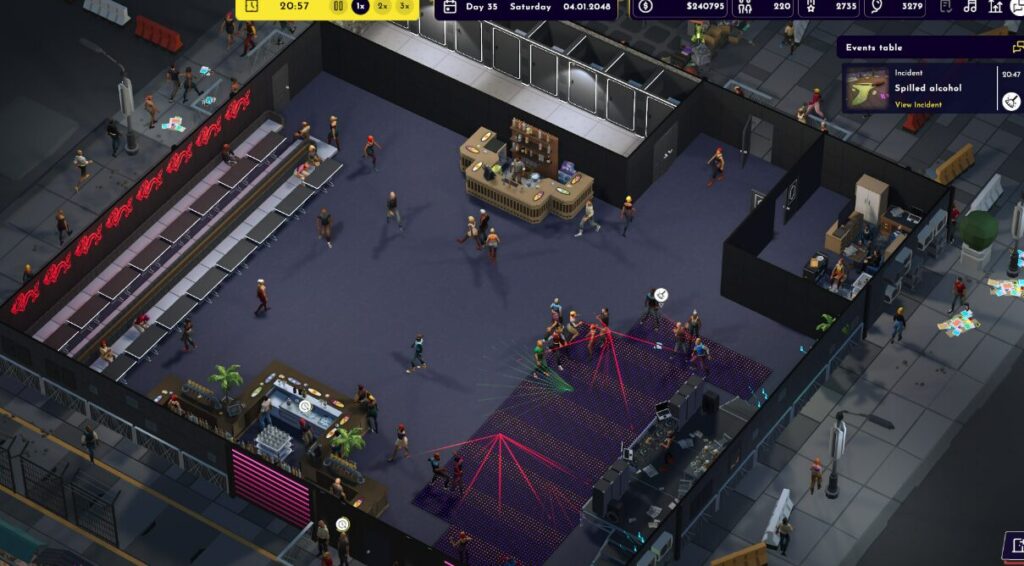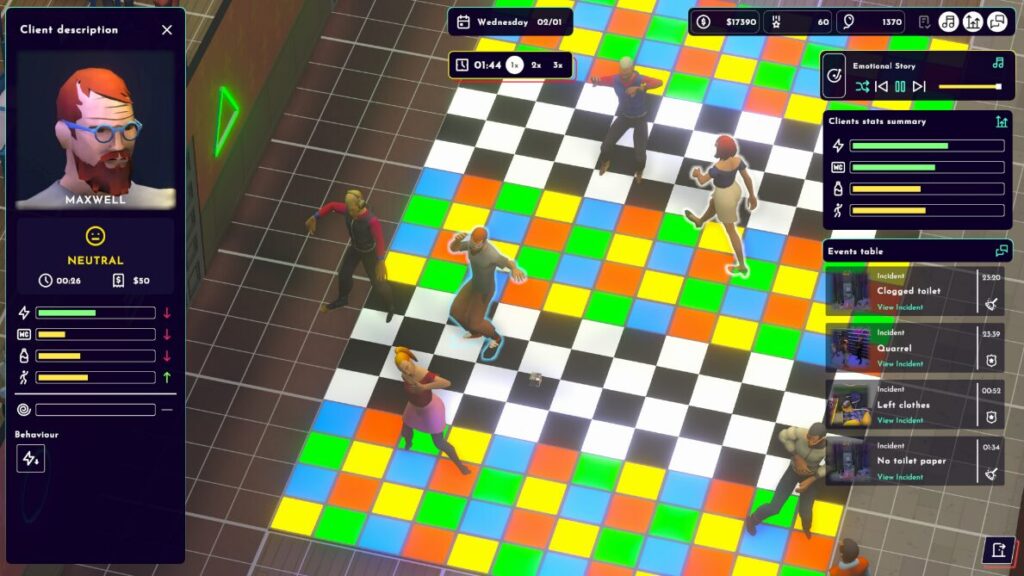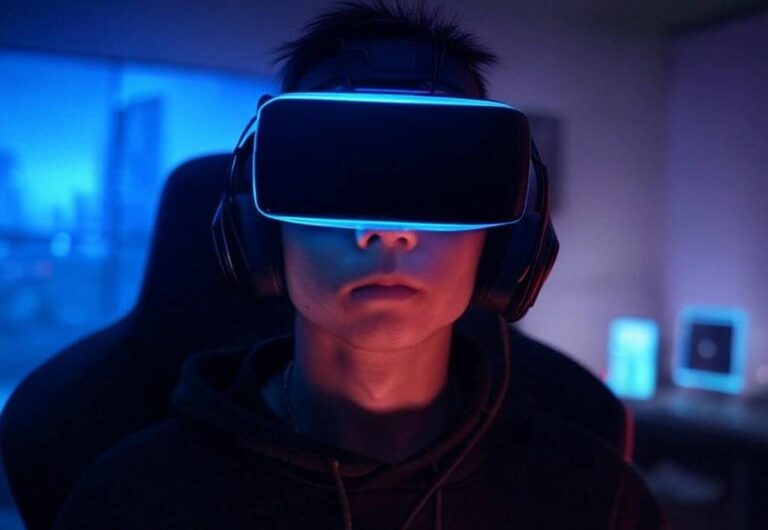A childhood dream comes true – manage and decorate your very own disco club! Hire skilled workers, customize it to your taste, and observe as crowds of people enjoy the music, ambiance, and delightful drinks.
The game provides a comprehensive and understandable tutorial, clearly explaining all its mechanics and aspects. However, there’s a minor issue – occasional language errors, especially at the end of verbs. At the beginning, you select a club and owner, with these components differing only minimally; for instance, one owner starts with a larger initial budget, and patrons visit your chosen club more for drinks than dancing. The difference isn’t substantial; instead, the club’s size and layout have a greater impact.
Each club has a specific objective, such as earning a set amount of money or reaching a particular Disco level (unlocked after reaching specific milestones). It’s somewhat disappointing that you can’t build your club from scratch. It might have been better if you could achieve multiple goals within a single club, reducing repetitiveness and requiring more effort in one campaign.
During the day, gameplay revolves around purchasing furniture, decorations, dance floors, and toilets, hiring staff, buying upgrades, and planning events. This part isn’t overly complex or challenging but allows for plenty of creativity in furnishing, despite limited options initially. It’s also convenient that you can change the furniture’s color, although not all of it.
The camera works well, allowing for easy adjustment to observe customer entertainment closely and the club’s overall activity. At night, you observe your employees and patrons at work. Unfortunately, that’s almost the only task – observation.

Bouncers and bartenders operate independently; you merely hover a ring over them to hasten their work, which becomes your primary activity. If there’s a spill, toilet paper runs out, or a fight breaks out, you send an employee to resolve it and wait for them to do so. The game practically plays itself, with no significant innovations except occasional mini-games, which are all basic and offer straightforward solutions.
AI behavior is peculiar; most customers mind their own business, but for some reason, they tend to intrude on staff areas. Each bar and toilet has queues, which you can customize. However, one customer always stands at the front but won’t order until someone stands in front of them, initiating a mass ordering of drinks.
From the gameplay description, it’s clear the game offers little challenge and quickly becomes monotonous. There’s no need to address electricity or water issues; clubs lack upper floors, and micromanagement is absent. The game lacks complexity. A positive aspect is that each club and owner has a unique description, and each club boasts a distinct environment.
Even the user interface (UI) is poorly designed, with an oversized cursor making it difficult to hit small buttons, and scrolling through the furniture list is cumbersome. You can’t search for specific items or sort them by price, which would be helpful if you can’t afford a pricier table or repairman. Occasionally, furniture glitches, and indicators disappear during construction.
Bins can’t be moved; they must be sold and repurchased. To rebuild doors, you must demolish the entire wall section, rebuild it, and then add the doors; you can’t simply replace them. Strangely, sinks aren’t required in toilets. You can’t save the game at will; during the day, you must exit and restart to save, and at night, saving isn’t possible. Additionally, you can’t see which owners you’ve already played a club with.

Overall progression in the game is poor; after a few upgrades, gameplay becomes unnecessary. You always have to manually address certain upgrades, such as sending a repairman or deciding to solve a problem yourself. Later in the game, the game handles these tasks automatically, leaving you with minimal impact on gameplay.
In the background, three playlists provide background music, which becomes repetitive quickly. Fortunately, you can add your music to the game. Visually, the game is basic, with plastic-looking models and minimal detail, and animations are unremarkable.
The concept is unique, but the final product feels more like a demo. Mechanics are limited and straightforward, unnecessarily stretching the game’s unoriginal content without much to showcase in presentation. Additionally, there are some technical flaws. Unfortunately, I can’t recommend the game, even on sale.





